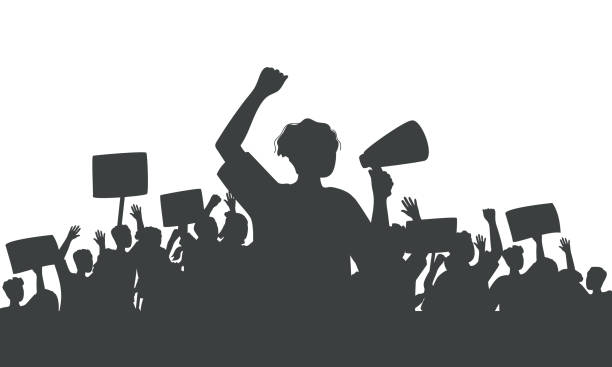The Hollywood of 2025 looks very different from what it was just a few years ago. The strikes by writers, actors, and other entertainment professionals didn’t just pause productions—they reshaped the industry in ways that continue to influence movies, TV, and streaming platforms today. From labor negotiations to technological changes, the ripple effects are still being felt worldwide.
So, how exactly did these strikes reshape Hollywood, and what does the future hold for the entertainment industry? Let’s explore.
The Origins of the Strikes
In 2023 and 2024, Hollywood faced some of the longest and most disruptive strikes in decades. Writers and actors joined forces to demand:
- Fair pay in an era dominated by streaming.
- Residual compensation for digital platforms.
- Protections against AI use in scripts, performances, and likeness rights.
- Improved working conditions for both union and non-union members.
The strikes brought nearly all scripted film and TV productions to a halt, creating significant delays in releases and leaving audiences with more reruns and reality shows.
The Immediate Impact on Hollywood
The strikes left a deep mark on the industry:
- Production Delays: Major films and shows were postponed, reshuffling studio calendars for years to come.
- Box Office Gaps: With fewer blockbusters, 2024 saw one of the weakest summers in ticket sales.
- Streaming Slowdown: Netflix, Disney+, and others stretched existing content but struggled to keep up with demand.
- Independent Surge: Smaller studios and indie creators filled some gaps, gaining visibility in the process.
These disruptions forced Hollywood to rethink how it manages both talent and content pipelines.
Strikes as a Turning Point
The strikes weren’t just about short-term demands—they were a turning point that forced the industry to adapt. By 2025, several key changes had emerged:
1. Stronger Union Influence
The Writers Guild of America (WGA) and Screen Actors Guild (SAG-AFTRA) emerged with stronger bargaining power. This shifted the balance of power, ensuring that streaming giants had to negotiate fairly.
2. New Standards for Streaming Residuals
Residual pay models were updated to reflect digital performance metrics, giving actors and writers a fairer share of profits when shows go viral on platforms.
3. AI Regulations in Entertainment
One of the biggest wins was clear AI usage guidelines. Studios now need consent and compensation before using AI to replicate voices, faces, or performances. This set global precedents for creative industries.
4. More Diverse Storytelling
With Hollywood slowed down, international and independent productions gained space to shine. Global audiences became more open to non-Hollywood storytelling, boosting demand for diverse content.
How Audiences Have Changed
Audiences in 2025 are not the same as before the strikes. The disruptions changed viewing habits in several ways:
- Shift to Global Content: Viewers embraced Korean dramas, European thrillers, and Latin American productions.
- Greater Appreciation for Live Entertainment: With fewer scripted shows, live events, concerts, and theater regained popularity.
- Streaming Fatigue: Constant price hikes and content shortages pushed people to reconsider subscriptions.
In short, Hollywood no longer has a monopoly on global entertainment.
The Rise of Hybrid Production Models
Studios in 2025 are increasingly adopting hybrid models, combining traditional Hollywood approaches with international partnerships, digital-first releases, and AI-assisted tools (under regulation). These strategies:
- Reduce reliance on any one region.
- Shorten production timelines.
- Allow cost savings while respecting union agreements.
This hybrid approach is reshaping how films and series are made, marketed, and distributed.
Economic Shifts in the Industry
The strikes also reshaped the economics of Hollywood:
- Budgets Became Leaner: Studios cut back on risky, high-budget projects, focusing instead on mid-range productions with global appeal.
- Streaming Consolidation: Smaller platforms merged or shut down as competition intensified.
- Talent Empowerment: Top actors and writers gained more leverage in negotiations, while new opportunities opened for fresh talent.
Hollywood’s business model is still adjusting, but the emphasis is now on sustainability, fairness, and global reach.
What the Future Holds for Hollywood
Looking ahead, Hollywood in 2025 and beyond faces both opportunities and challenges:
- Opportunities: Stronger labor protections, fairer pay structures, and new storytelling opportunities through global collaborations.
- Challenges: Recovering box office numbers, keeping up with evolving tech like VR and AR, and maintaining audience loyalty in an era of endless options.
The strikes may have caused short-term pain, but they set the stage for a more balanced and forward-looking entertainment ecosystem.
Conclusion
Thstrikes of recent years reshaped Hollywood in ways that will define the industry for the next decade. From fairer wages and AI protections to global storytelling and leaner production models, the entertainment world is now in transition.
For audiences, this means more diverse choices and for creators, a fairer playing field. Hollywood in 2025 is no longer just about big studios—it’s about collaboration, innovation, and resilience.

